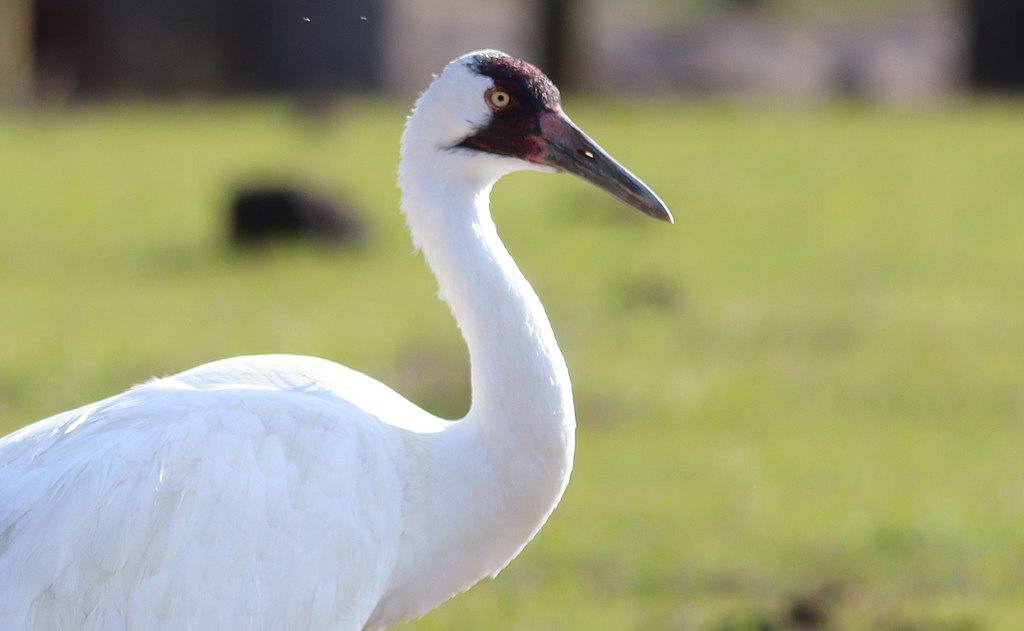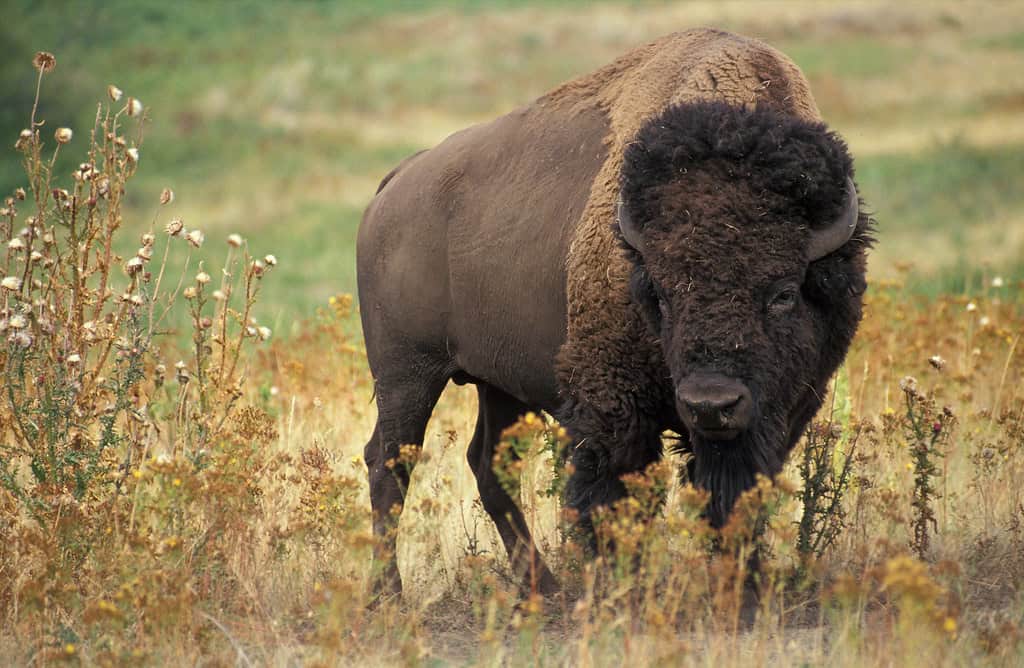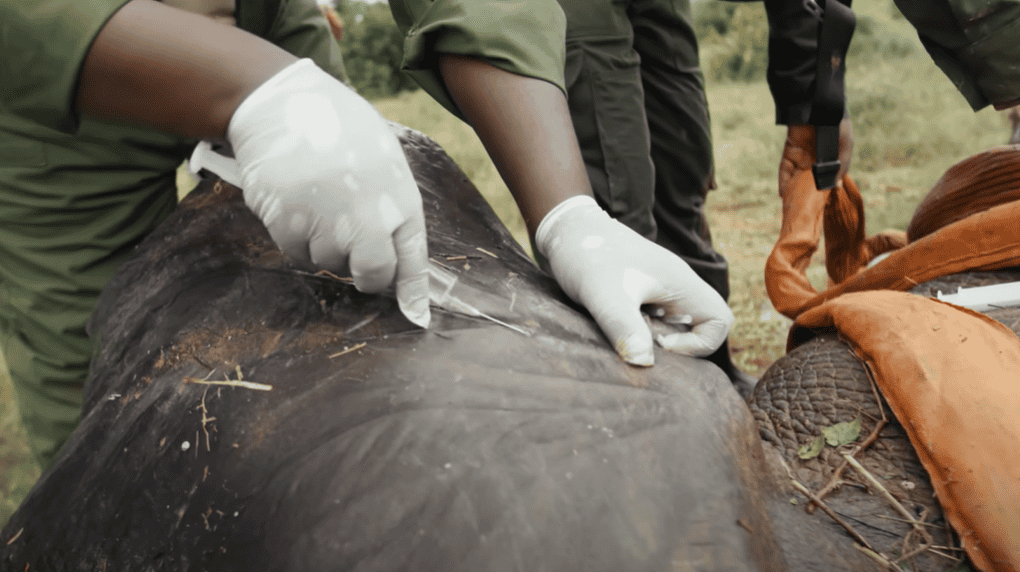Wildlife rescue operations represent some of humanity’s most noble efforts to correct our impact on the natural world. These interventions not only save individual animals but often lead to groundbreaking conservation initiatives, policy changes, and shifts in public perception. The most significant wildlife rescues throughout history have transformed how we interact with and protect our planet’s biodiversity. From oil spill responses that revolutionized environmental regulations to the salvation of species on the brink of extinction, these rescue missions demonstrate our capacity for compassion and ingenuity when confronted with ecological crises. This article explores eighteen wildlife rescue operations that fundamentally changed conservation practices, environmental policies, and our relationship with the natural world.
15. Operation Noah Saving Wildlife from the Kariba Dam (1958-1964)

When construction of the Kariba Dam in Zimbabwe (then Southern Rhodesia) created Lake Kariba, thousands of animals were stranded on newly formed islands as the waters rose. Operation Noah, led by conservationist Rupert Fothergill, became one of history’s first large-scale wildlife rescue operations. Teams rescued over 6,000 animals, including elephants, rhinos, and numerous smaller species. This unprecedented rescue effort established protocols for wildlife relocation during infrastructure development that are still used today. Operation Noah also highlighted the environmental impact of large dam projects, leading to the modern requirement for environmental impact assessments before such constructions begin. Perhaps most importantly, it demonstrated that humans could successfully intervene to mitigate their environmental impact, setting a precedent for conservation interventions worldwide.
14. The California Condor Recovery Program (1987-Present)

By 1987, the California condor was functionally extinct in the wild, with only 27 individuals remaining in captivity. The California Condor Recovery Program, a collaborative effort between federal agencies and conservation organizations, launched a captive breeding initiative that would become a model for endangered species recovery. The program faced enormous challenges, including the condor’s slow reproductive rate (one egg every two years) and complex socialization needs. Despite these obstacles, conservationists successfully bred the birds in captivity and began reintroducing them to the wild in 1992. As of 2023, the population has grown to over 500 birds, with more than half flying free. This rescue fundamentally changed wildlife conservation by demonstrating that species could be brought back from the edge of extinction through intensive human intervention, captive breeding, and reintroduction programs. The techniques developed have since been applied to numerous other endangered species recovery efforts around the world.
13. The Exxon Valdez Oil Spill Response (1989)

When the Exxon Valdez tanker ran aground in Alaska’s Prince William Sound in March 1989, it released approximately 11 million gallons of crude oil, creating one of the most devastating environmental disasters in U.S. history. The wildlife rescue that followed was unprecedented in scale, with thousands of volunteers working to save oil-soaked birds and marine mammals. More than 1,600 sea otters and countless birds were brought to rehabilitation centers. While the mortality rate was high, the lessons learned revolutionized oil spill response protocols. This disaster and its aftermath led directly to the Oil Pollution Act of 1990, which mandated double-hulled tankers and comprehensive contingency plans for oil spills. Wildlife rehabilitation techniques developed during this crisis have become standard practice worldwide, and the incident transformed public perception about corporate environmental responsibility. The images of oil-covered wildlife became powerful symbols that galvanized the environmental movement and influenced a generation of environmental policy.
12. Saving the Arabian Oryx from Extinction (1962-Present)

By the early 1960s, the Arabian oryx was hunted to near extinction in its native range across the Arabian Peninsula. In 1962, Operation Oryx was launched—a groundbreaking international effort to capture the few remaining wild oryx and establish a captive breeding population at the Phoenix Zoo in Arizona. This operation marked one of the first times that a species was saved through ex-situ conservation—preserving a species outside its natural habitat with the intention of future reintroduction. The program successfully bred the captive population, and in 1982, the first oryx were reintroduced to Oman. Today, approximately 1,200 Arabian oryx live in the wild, with thousands more in captivity. This rescue operation pioneered the concept of species reintroduction as a conservation tool and demonstrated the importance of international cooperation in conservation efforts. It also established a model for how zoos could contribute meaningfully to conservation, transforming their role from mere exhibition spaces to vital partners in biodiversity preservation.
11. Rescuing Bears from Bile Farms in Asia (1998-Present)

Since 1998, Animals Asia Foundation has been working to rescue Asiatic black bears (moon bears) from bile farms in China and Vietnam, where they are kept in tiny cages and subjected to painful bile extraction for use in traditional medicine. The organization has rescued over 600 bears and established sanctuaries in China and Vietnam. This ongoing rescue operation has changed wildlife conservation by highlighting the cruelty of wildlife farming and the need for animal welfare considerations in conservation efforts. The campaign has successfully convinced many traditional medicine practitioners to use plant-based alternatives to bear bile, demonstrating how wildlife rescue can drive market transformation. Perhaps most significantly, the bear rescue campaign has influenced policy changes in both countries, with Vietnam committing to ending bear bile farming entirely by 2026. The rescue operation transformed public perception in Asia about wildlife welfare and has become a model for how rescue operations can lead to systemic change in wildlife exploitation practices.
10. The Whooping Crane Eastern Partnership (1999-Present)

The whooping crane, North America’s tallest bird, faced extinction in the mid-20th century, with only 15 birds remaining in the wild by 1941. The Whooping Crane Eastern Partnership, established in 1999, pioneered revolutionary techniques to reintroduce these birds to their historical range. Most notably, the project used ultralight aircraft to teach captive-bred cranes their ancestral migration routes, with pilots dressed in crane costumes to prevent human imprinting. This audacious rescue effort demonstrated how creative thinking could solve seemingly impossible conservation challenges. The program has succeeded in establishing a migratory population where none existed before, increasing the total whooping crane population to over 800 birds. This rescue operation revolutionized reintroduction methodologies by showing that humans could teach complex behaviors like migration to captive-reared animals. The project also pioneered new models of interagency cooperation, bringing together federal agencies, non-profits, and private citizens in a coordinated conservation effort that has become a template for other endangered species recovery programs.
9. The Great Penguin Rescue of South Africa (2000)

When the cargo ship MV Treasure sank off the coast of South Africa in June 2000, it spilled 1,300 tons of fuel oil near Robben and Dassen Islands, home to nearly 40% of the endangered African penguin population. What followed was the largest seabird rescue in history. Over 20,000 penguins were collected and transported to rehabilitation centers, while another 19,500 were preventatively captured and relocated before they could become oiled. More than 12,000 volunteers participated in the rescue operation, washing, feeding, and caring for the penguins. Remarkably, over 90% of the oiled penguins were successfully rehabilitated and released—an unprecedented success rate for an oil spill response. This rescue operation revolutionized protocols for responding to wildlife affected by oil spills and demonstrated the effectiveness of preventative capture strategies. It also highlighted the power of volunteer mobilization in conservation emergencies and led to improved protective measures for African penguin colonies. The techniques developed during this rescue are now standard procedure in oil spill responses worldwide.
8. Rescuing the American Bison from Extinction (Late 1800s)

By 1884, the American bison population had collapsed from an estimated 30-60 million to just a few hundred individuals due to commercial hunting and deliberate extermination policies. The rescue of this iconic species began with the efforts of a few dedicated individuals like William Hornaday and Theodore Roosevelt, who established the American Bison Society in 1905. They worked to protect the remaining wild bison and create captive breeding herds. This early conservation effort represented one of the first times Americans acted to save a species from extinction. Today, approximately 500,000 bison exist, with about 30,000 in conservation herds. This historical rescue operation fundamentally changed wildlife conservation by inspiring the American conservation movement. It demonstrated that humans could reverse extinction trends through deliberate intervention and shaped the emerging concept of wildlife management. The rescue of the American bison also established the precedent for federal involvement in wildlife conservation, laying groundwork for future legislation like the Endangered Species Act. Perhaps most importantly, it transformed public perception about humanity’s responsibility toward other species and the value of wildlife beyond immediate economic utility.
7. Rescuing Orangutans from Palm Oil Deforestation (1990s-Present)

The rapid expansion of palm oil plantations in Indonesia and Malaysia has devastated orangutan habitat, leaving countless orphaned and displaced orangutans. Organizations like the Orangutan Rehabilitation Centre in Borneo and the Sumatran Orangutan Conservation Programme have rescued hundreds of orangutans, rehabilitating them for eventual return to the wild. These rescue operations have evolved beyond simply saving individual animals to addressing the root causes of habitat loss. The visibility of orphaned orangutans has become a powerful symbol in campaigns against unsustainable palm oil production, leading to the development of the Roundtable on Sustainable Palm Oil (RSPO) certification system. This rescue effort has transformed conservation by connecting wildlife protection directly to consumer choices and corporate practices. It pioneered the rehabilitation of great apes for wild release, developing protocols now used worldwide. Perhaps most significantly, it demonstrated how wildlife rescue could be leveraged to drive broader market transformations and forest protection efforts, creating a model for how conservation organizations can use specific charismatic species to protect entire ecosystems.
6. The International Crane Foundation’s Siberian Crane Project (1970s-Present)

When Siberian crane populations plummeted due to habitat destruction and hunting along their 5,000-mile migration route between Siberia and India, the International Crane Foundation launched an ambitious rescue effort. The project pioneered “Operation Migration,” using ultralight aircraft to teach captive-bred cranes safe migration routes. This technique was later adapted for whooping cranes and other endangered migratory birds. Perhaps more remarkably, the Siberian crane project facilitated unprecedented diplomatic cooperation between countries with otherwise tense relations. Russia, China, Iran, and several Central Asian nations worked together to protect migration stopover points, demonstrating how wildlife conservation could transcend political differences. The project created a “flyway approach” to conservation that recognized the need to protect habitat across international boundaries, revolutionizing how migratory species are managed. By focusing on a culturally significant species in many Asian cultures, the project also demonstrated how conservation efforts could be more successful when aligned with cultural values. Today, while Siberian cranes remain endangered, secure breeding populations exist and protected areas have been established along their entire migration route.
5. The Great Elephant Rescue of Malawi (2016-2017)

In 2016, Malawi faced severe drought and human-wildlife conflict issues in Liwonde National Park. To address these challenges, African Parks undertook one of the largest elephant relocations in history, moving 520 elephants from two overcrowded parks to the newly restored Nkhotakota Wildlife Reserve. This massive operation required darting elephants from helicopters, transporting family groups together, and carefully monitoring their adaptation to their new home. The extraordinary logistical achievement demonstrated how large-scale wildlife translocation could be used as a management tool. This rescue operation transformed conservation practice by showing that entire populations—not just individual animals—could be relocated successfully. It established new protocols for elephant translocation that maintain family groups and social structures, improving both welfare outcomes and post-release survival. The project also pioneered a new model of public-private partnership in conservation, with African Parks taking over management of government parks in crisis. This approach has since been replicated across Africa. Perhaps most importantly, it demonstrated how proactive wildlife management could prevent human-wildlife conflict rather than merely responding to it, saving both elephant and human lives.
4. Red Wolf Recovery Program (1973-Present)

By 1970, the red wolf was functionally extinct in the wild due to predator control programs, habitat loss, and hybridization with coyotes. The U.S. Fish and Wildlife Service captured the last 14 pure red wolves for a captive breeding program that would become one of conservation’s most innovative rescue efforts. In 1987, red wolves were reintroduced to northeastern North Carolina—the first time an officially extinct predator was returned to its native range in the United States. This groundbreaking program developed techniques for identifying pure red wolves using physical characteristics and genetic testing, establishing captive breeding protocols, and managing hybridization risks in the wild. These methods have since been applied to other predator recovery efforts worldwide. The program also pioneered the use of adaptive management in endangered species recovery, continuously refining strategies based on results. Despite political and social challenges that have limited the program’s success in recent years, approximately 20-25 red wolves remain in the wild with over 200 in captivity. This rescue effort fundamentally changed wildlife conservation by demonstrating that predator restoration was both biologically and technically feasible, paving the way for subsequent wolf reintroductions in Yellowstone and elsewhere.
3. Thailand’s Elephant Hospital and Rehabilitation Centers (1990s-Present)

Thailand’s establishment of the world’s first elephant hospital in Lampang in 1993 revolutionized wildlife veterinary care and rehabilitation. This facility and subsequent elephant rehabilitation centers across Thailand have rescued hundreds of elephants from logging camps, tourist attractions, and urban environments where they suffered from abuse, neglect, and injury. These centers pioneered specialized medical treatments for elephants, including prosthetic limbs for those injured by landmines, hydrotherapy for injured elephants, and protocols for treating captivity-related psychological trauma. The rescue operations transformed wildlife conservation by establishing elephants as individuals deserving of medical care and ethical treatment—not just as species to be preserved. This represented a significant philosophical shift in conservation thinking. The Thai elephant rescue model established a new paradigm where tourism could support conservation through ethical elephant sanctuaries, creating economically sustainable alternatives to exploitative elephant tourism. This approach has been replicated throughout Southeast Asia. Perhaps most significantly, these rescue efforts have influenced national policy, with Thailand enacting stricter regulations on elephant welfare and banning the use of elephants for logging.
2. Marine Mammal Center’s Rescue Network (1975-Present)

Since its founding in 1975, The Marine Mammal Center in California has rescued over 24,000 marine mammals, developing rescue and rehabilitation protocols that have been adopted worldwide. What makes this operation truly transformative is its development of a comprehensive rescue-to-research model. Every animal treated provides data that contributes to scientific understanding of marine mammal health and ocean conditions. This organization pioneered specialized veterinary techniques for marine mammals, including treatments for domoic acid toxicity, specialized feeding methods for orphaned seal pups, and protocols for oil spill response. The center’s research has identified emerging threats to marine mammals, including the impacts of harmful algal blooms, microplastics, and novel diseases. Perhaps most importantly, the Marine Mammal Center established a model for public engagement in conservation, with thousands of volunteers participating in rescue operations and education programs reaching millions. This rescue operation transformed marine conservation by creating a citizen science approach to wildlife rescue and establishing marine mammals as sentinel species that indicate ocean health. The center’s influence extends to policy, with its research informing marine protection legislation and fishing regulations designed to reduce marine mammal entanglement.
1. Saving Australia’s Koalas During the 2019-2020 Bushfires

The devastating Australian bushfires of 2019-2020 burned over 46 million acres and killed or displaced nearly 3 billion animals, including tens of thousands of koalas. The rescue response that followed was unprecedented in scale and urgency. Wildlife rescuers, veterinarians, and volunteers worked tirelessly to save burned and dehydrated koalas, developing new protocols for treating burn injuries, smoke inhalation, and dehydration in marsupials. This crisis response transformed wildlife conservation in several ways. It catalyzed the development of specialized wildlife disaster response teams and emergency protocols that are now being implemented across Australia and internationally. The widespread media coverage of koala rescues generated over $60 million in donations for Australian wildlife recovery, demonstrating.
Conclusion:

The wildlife rescue operations highlighted in this article showcase humanity’s profound ability to respond with compassion, innovation, and resolve in the face of ecological crisis. Each rescue—whether driven by natural disasters, human negligence, or systemic exploitation—marks a turning point in our collective understanding of conservation. These interventions did more than save individual animals; they reshaped global policies, inspired new scientific techniques, and galvanized public support for protecting biodiversity. From the delicate reintroduction of critically endangered species to the mass mobilization of volunteers during environmental catastrophes, these efforts demonstrate that meaningful change is possible when people unite around a shared commitment to wildlife. As threats to ecosystems grow more complex, the legacy of these rescues serves not only as a beacon of hope but also as a blueprint for future conservation strategies—reminding us that even in the face of immense loss, recovery is achievable when compassion meets action.
- 10 Animals That Use Camouflage Best - August 17, 2025
- 13 Wild Birds That Use Tools to Hunt - August 17, 2025
- 9 Smartest Animal Species in North America—And Why They’re So Clever - August 17, 2025

